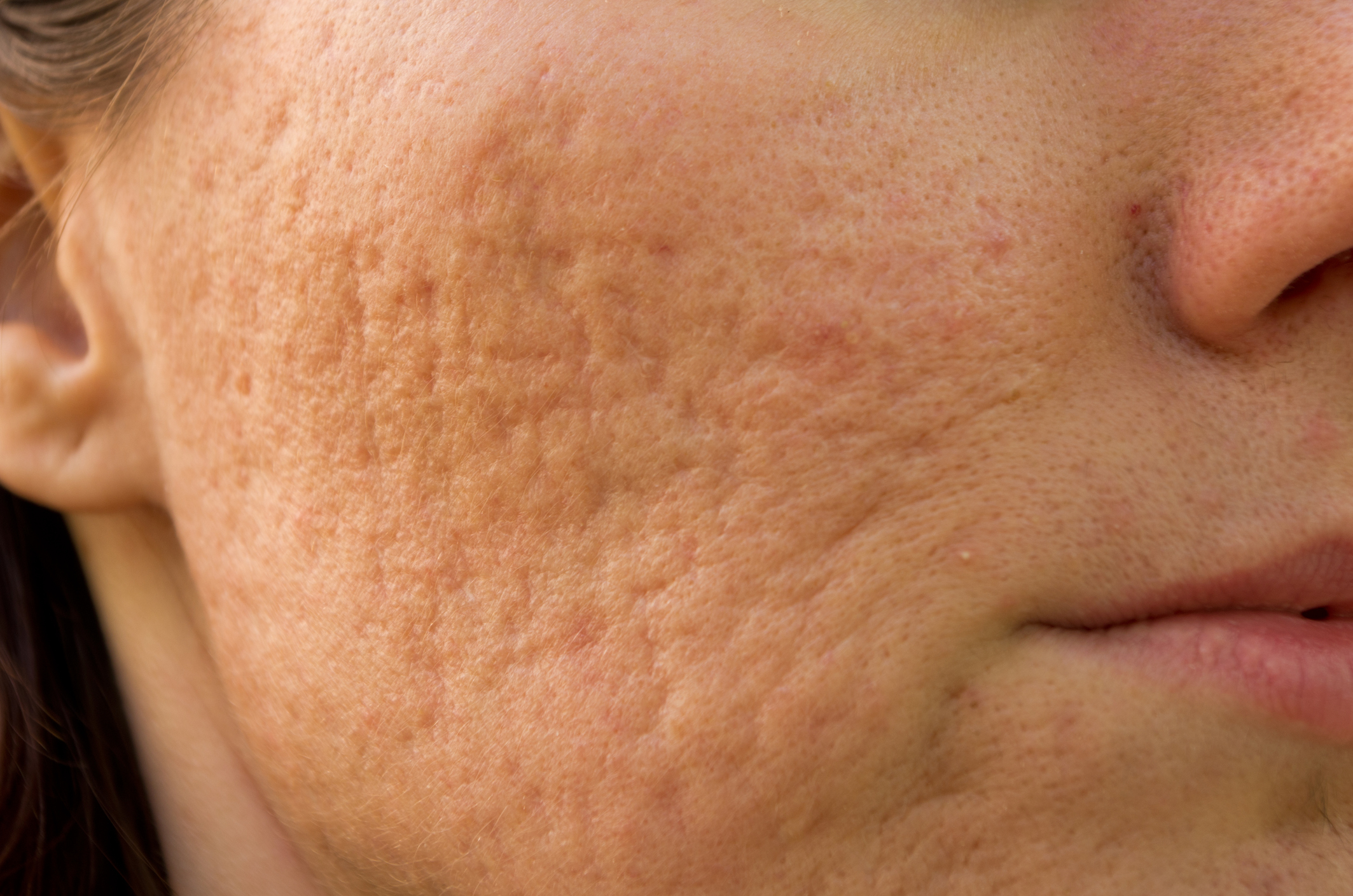WHAT IS ACNE SCARRING?
Acne Scarring is a very common complication of the Acne and referred to a fibrous process that affects the appearance of the skin.

Acne is a very common condition found among adolescents. All body parts that have a high presence of pilosebaceous glands on the surface of the skin are at risk. However, face, chest, and back are usually the most affected areas. The consequences of acne lesions may result in permanent scarring which can have a huge impact on the quality of one’s life. The scar formation depends on genetics, delay in treatment, and severity of the condition
Acne scars are grouped into three categories based on whether the loss of collagen is present or not:
- atrophic
- hypertrophic, and keloidal. Majority of people have atrophic scars due to the presence of collagen loss.
- Hypertrophic and keloidal scars are quite rare and usually form on chest and shoulders
Atrophic scars are further subdivided into three subtypes:
- ice pick
- rolling
- boxcar
Ice prick refers to narrow scars (<2 mm in diameter) and usually deep ones that go all the way down to the deep dermis. The rolling type refers to scars that have a rolling appearance and extend over 5mm in diameter. They are found in the fibrous tethering of the dermis and extend into subcutis. Lastly, the boxcar scar has an oval appearance with sharp vertical edges. They are much wider compared to ice pick type.
Meanwhile, hypertrophic scars are usually raised and firm. They do not extend past the injury site. On the other hand, keloid scars appear as red-purple papules and nodules. They tend to extend past the injury site.
